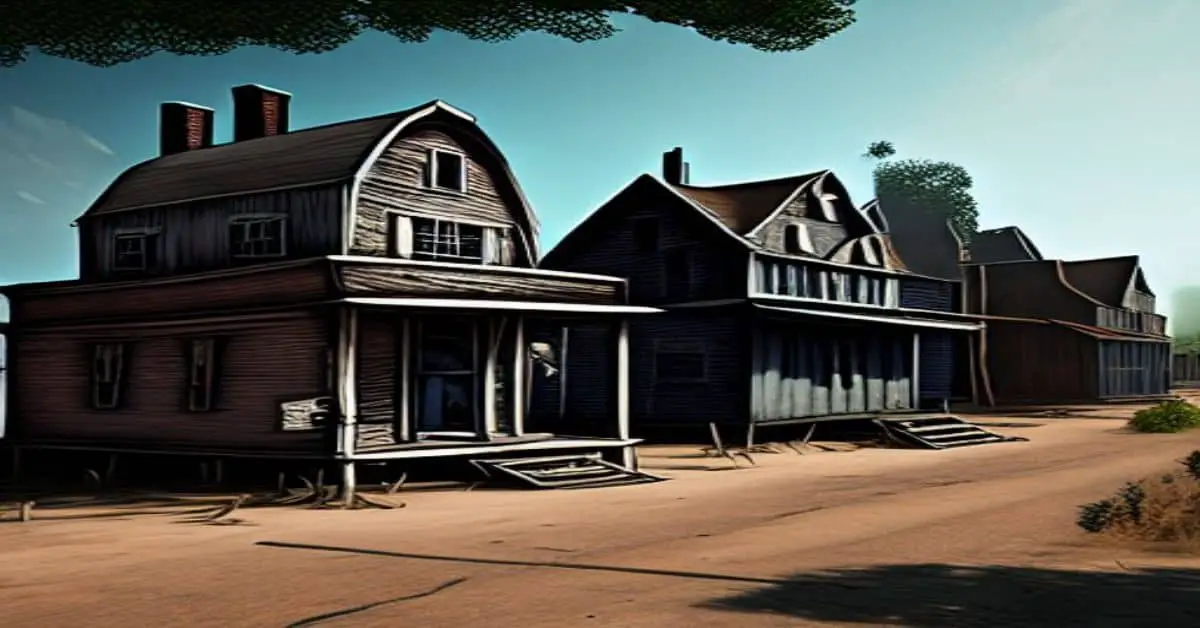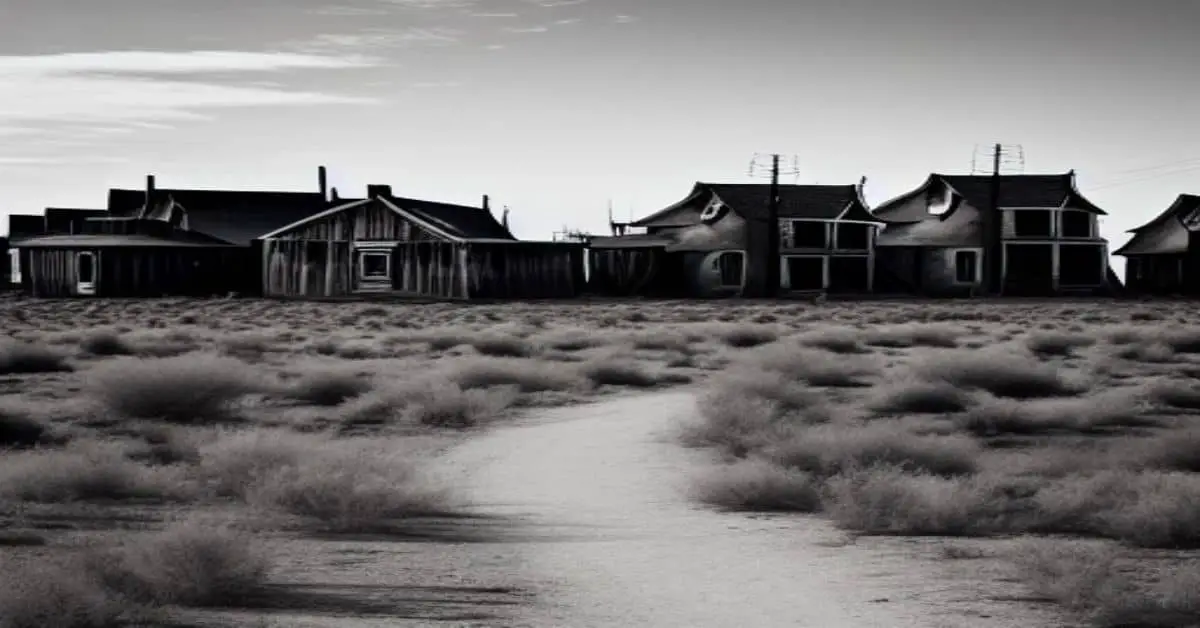Arlington, MO
County: Phelps
Zip Code:
Latitude / Longitude: 37° 55′ 13 N, 91° 58′ 16 W
Elevation:
Time Zone: Central (CST) (UTC-6)
Established:
Disestablished:
Comments: Arlington is an unincorporated community in western Phelps County, Missouri, United States, along a county road that was once U.S. Route 66. The town found its prosperity in the mid-19th century. Located near Rolla on the Ozark Plateau, the only remaining business at Arlington was a caravan park that closed permanently in 2008.
Remains: By 1946, the town was in decline due to re-routing of a widened US 66; the townsite was purchased that year by R. E. Carney. The original 1923 US 66 road bridge, bypassed when the road was widened to four lanes in 1952, was demolished when Interstate 44 bypassed the town in 1966-1967, leaving the original two-lane US 66 a dead-end.
Current Status: Most of the Stony Dell Resort was lost to demolition during freeway construction; the restaurant, archway, the fish pond, the gas, food, and gift store, some of the classic stonework, and a handful of cabins remain, now abandoned. Even the 1952 four-lane bridge was demolished and replaced as part of a 2005 alignment of I-44.
Remarks: There are no remaining businesses, the caravan park (Arlington River Resort, 13003 Arlington Road) closed permanently in 2008. The only road access to the townsite is I-44 to Newburg, Missouri then back on what’s left of the original two-lane US 66 roadway (Arlington Outer Road, a dead-end). No longer easily accessed by rail and road, Arlington is now merely a small group of private residences. Arlington is currently composed of more than 20 people albeit it is no longer its own township and is now a part of Newburg Missouri.
Bloodland, MO
County: Pulaski
Zip Code:
Latitude / Longitude: 37° 41′ 14 N, 92° 9′ 8 W
Elevation:
Time Zone: Central (CST) (UTC-6)
Established: 1898
Disestablished: 1941
Comments: Bloodland is a ghost town in southern Pulaski County, Missouri. The community lies within Ft. Leonard Wood.
Remains: A post office called Bloodland was established in 1898 and remained in operation until 1941. The community has the name of one Mr. Blood, the original owner of the townsite.
Current Status: The town is near Big Piney and close to Palace, which is outside the South Gate of Fort Leonard Wood. Bloodland is located near the Waynesville Regional Airport (TBN).
Remarks: The GNIS classifies it as a populated place.
Columbia Conservation, MO
County:
Zip Code:
Latitude / Longitude: 38°57’5 N 92°19’42 W
Elevation: 758 ft (231 m)
Time Zone: Central (CST) (UTC-6)
Established: 1821
Disestablished:
Comments: The Columbia area was once part of the Mississippian culture and home to the Mound Builders. When European explorers arrived, the area was populated by the Osage and Missouri Indians. In 1678, La Salle claimed all of Missouri for France. The Lewis and Clark Expedition passed by the area on the Missouri River in early June 1804.
Remains: In 1806, two sons of Daniel Boone established a salt lick 40 miles (64 km) northwest of Columbia. giving the area its early name: Boonslick. The Boone’s Lick Trail wound from St. Charles to the lick in present-day Howard County. In 1818, a group of settlers, incorporated under the Smithton Land Company, purchased over 2,000 acres (8.1 km2) and established the village of Smithton less than a mile from current-day downtown Columbia. In 1821, the settlers moved because of lack of water across the Flat Branch to the plateau between the Flat Branch and Hinkson creeks in what is now the downtown district. They renamed the settlement Columbia—a poetic personification of the United States.
Current Status: Columbia’s infrastructure was relatively untouched by the Civil War. Missouri, as a slave state, had Southern sympathies but remained in the Union. The majority of the city was pro-Union; however, the surrounding agricultural areas of Boone County and the rest of central Missouri were decidedly pro-Confederate. Because of this, the University of Missouri became a base from which Union troops operated.
Remarks: No battles were fought within the city because the presence of Union troops dissuaded Confederate guerrillas from attacking, though several major battles occurred at nearby Boonville and Centralia. After the Civil War, race relations in Columbia followed the Southern pattern; George Burke, a black man, was lynched in 1889.
Cookville, MO
County: Pulaski
Zip Code:
Latitude / Longitude: 37° 38′ 56 N, 92° 12′ 36 W
Elevation:
Time Zone: Central (CST) (UTC-6)
Established: 1878
Disestablished: 1941
Comments: Cookville is an extinct town in Pulaski County, in the U.S. state of Missouri. The GNIS classifies it as a populated place. The townsite is in a forest near Fort Leonard Wood.
Remains:
Current Status: A post office called Cookville was established in 1878, and remained in operation until 1941.
Remarks: The community has the name W. J. Cook, a local merchant.
Georgia City, MO
County: Jasper
Zip Code:
Latitude / Longitude: 37° 16′ 26.18 N, 94° 32′ 35.84 W
Elevation:
Time Zone: Central (CST) (UTC-6)
Established:
Disestablished:
Comments: Georgia City, Missouri, is the name of a former town in Jasper County, Missouri, about 15 miles north of Joplin, Missouri.
Remains: Georgia City was founded in January 1868 by John C. Guinn. Named after his home state, Georgia (U.S. state), it had a population of 200 in March 1869. James Clayton Cox was also one of the founders. A post office was established at Georgia City in 1870 and remained in operation until 1904.
Current Status: By 1883, the population had declined to 50, and by 1912 the town had essentially disappeared, In February 1930, it officially ceased to exist when the county court granted a petition presented by Lottie Guinn Young, daughter of the founder, asking that the streets and alleys of the platted village are vacated and the land formally returned to farm acreage. Now all that remains is the Georgia City Cemetery at 37°17’22 N 94°32’31 W.
Remarks: The townsite was located in Sections 4 and 5 of Township 29 N, Range 33 W, where present-day Oak Road dead-ends at County Road 270, about four miles east of Asbury, Missouri
Goldman, MO
County: Jefferson
Zip Code:
Latitude / Longitude: 38°17′50″N 90°31′17″W / 38.29722°N 90.52139°W / 38.29722
Elevation:
Time Zone: Central (CST) (UTC-6)
Established:
Disestablished:
Comments: Goldman is an unincorporated community in Jefferson County, Missouri, about 25 miles south of St. Louis, Missouri, and five miles north of the county courthouse at Hillsboro, Missouri. Goldman is located on Old Lemay Ferry Road, an old trade route connecting Hillsboro and St. Louis.
Remains: A post office called Goldman was established in 1895 and remained in operation until 1905. The community has the name of the Goldman brothers, local merchants.
Current Status: Goldman is adjacent to the historic Sandy Creek Covered Bridge, one of only four covered bridges in Missouri, and a state historic site.
Remarks: The town is near the site where Missouri Governor Mel Carnahan and two other people died on October 16, 2000, in an airplane crash.
Hamburg, MO
County: St. Charles
Zip Code:
Latitude / Longitude: 38° 40′ 11 N, 90° 43′ 54 W
Elevation:
Time Zone: Central (CST) (UTC-6)
Established: 1830s
Disestablished: 1940-1941
Comments: Hamburg was a small town in St. Charles County, Missouri, United States. The town was evacuated in 1940-1941 as the area was taken over by the U.S. Department of the Army for the Weldon Spring Ordnance Works, which manufactured trinitrotoluene (TNT) and dinitrotoluene (DNT) and later processed uranium.
Remains: Settled in the 1830s by German immigrants John Nahm, William Koenig, George Mades, Daniel Schmidt, Jacob Schneider, and Nickolas Roth, Hamburg was a railroad and river access point and town-center for farm families of the area. The town met its demise in 1941 when the U.S. government purchased the entire area including two other nearby farm communities (Howell and Toonerville) for the construction of an ordnance plant to support preparations for World War II. The federal government notified residents in late 1940 of its plan for the plant and by mid-1941 everyone was moved out and the area closed off. Some had negotiated purchase prices and received their payment but others ended up in a long court battle that was not settled until after WWII in the U.S. Supreme Court.
Current Status: A few people in the area had participated in the California gold rush and returned to Missouri with enough money to buy farms and start their families. Many served in the Civil War, some on either side, though for the most part, German-heritage families supported the Union. A number of settlers moved to the Oklahoma Territory during the Land Run of 1889.
Remarks: Hamburg (not to be confused with New Hamburg in southeast Missouri) was located along the Missouri River, southwest of St. Charles along Highway 94 in St. Charles County. Nearby farm communities were settled in the late 18th century by the Howell and Boone (Daniel Boone and son Daniel Morgan Boone) families. Originally the German settlers of the to-be Hamburg built homes near the Missouri River below and along the bluff, but after flooding the majority of the community moved above the bluff overlooking the river, creating an upper and lower Hamburg.
Holman, MO
County: Webster
Zip Code:
Latitude / Longitude: 37° 16′ 23 N, 93° 3′ 12 W
Elevation:
Time Zone: Central (CST) (UTC-6)
Established: 1903
Disestablished: 1911
Comments: Holman is an extinct town in Webster County, in the U.S. state of Missouri. The GNIS classifies it as a populated place.
Remains: The site is located on Missouri Supplemental Route OO about fifteen miles (24 km) northeast of Springfield.
Current Status: The community once had Holman Schoolhouse, now defunct. The school had the name of the Holman family of settlers.
Remarks: A post office called Holman was established in 1903, and remained in operation until 1911.
Hopewell (Daviess County), MO
County: Daviess
Zip Code:
Latitude / Longitude:
Elevation:
Time Zone: Central (CST) (UTC-6)
Established:
Disestablished:
Comments: Hopewell is a former unincorporated community in Daviess County, Missouri, United States.
Remains:
Current Status:
Remarks:
Hopewell (Mississippi County), MO
County: Mississippi
Zip Code:
Latitude / Longitude:
Elevation:
Time Zone: Central (CST) (UTC-6)
Established:
Disestablished:
Comments: Hopewell is a former unincorporated community in Mississippi County, Missouri, United States. It was a small settlement in northeastern Ohio Township.
Remains:
Current Status:
Remarks:
Hopewell Furnace, MO
County: Warren
Zip Code:
Latitude / Longitude: 38° 41′ 19 N, 91° 8′ 27 W
Elevation:
Time Zone: Central (CST) (UTC-6)
Established: 1858
Disestablished: 1978
Comments: Hopewell is an unincorporated community in eastern Washington County, Missouri, United States.
Remains: The community lies on Hopewell Creek south of Summit and Missouri Route 8.
Current Status: Hopewell was originally called “Hopewell Furnace”, and under the latter name was platted in 1858, and named after a nearby blast furnace of the same name.
Remarks: A post office called Hopewell Furnace was established in 1855, the name was changed to Hopewell in 1886, and the post office closed in 1978.
Howell, MO
County: St. Charles
Zip Code:
Latitude / Longitude: 38° 44′ 35 N, 90° 36′ 39 W
Elevation:
Time Zone: Central (CST) (UTC-6)
Established: 1900
Disestablished: 1917
Comments: Howell is an unincorporated community in St. Charles County, in the U.S. state of Missouri.
Remains: Much of the community has been annexed by St. Peters.
Current Status: A post office called Howell was established in 1900, and remained in operation until 1917.
Remarks: The community has the name of Francis Howell, a local educator.
Lakeside Estate, MO
County: Benton
Zip Code:
Latitude / Longitude:
Elevation:
Time Zone: Central (CST) (UTC-6)
Established:
Disestablished:
Comments: Lakeside Estate is a former settlement in Benton County, Missouri, United States. Lakeside Estate was a resort community on the Osage River in southern Cole Township.
Remains:
Current Status:
Remarks:
Monark Springs, MO
County: Newton
Zip Code:
Latitude / Longitude: 36°51′52″N 94°17′30″W / 36.86444°N 94.29167°W / 36.86444 -94.29167
Elevation:
Time Zone: Central (CST) (UTC-6)
Established:
Disestablished:
Comments: Monark Springs is a ghost town in Newton County, Missouri, United States. It is located about five miles east of Neosho.
Remains: In August 1956, an outbreak of typhoid fever occurred in Monark Springs during a national Church of God camp meeting that had over 400 members from other states as far west as California and east to Kentucky, attending. The cases continued to spread outside of the town after the meeting, with 16 reported cases cropping up in various parts of Missouri and Kansas. CDC officials were sent to the campsite to investigate the water in the area, in order to determine the exact source of the outbreak. It was eventually discovered that a carrier of typhoid fever had unknowingly contaminated the water in the well that had been used as drinking water for the entire campsite.
Current Status: A fire began in three separate spots on Halloween 1997 at Red’s Tire Service in Monark Springs. (Not at Monark Springs, but between Neosho, MO and Joplin, MO.) The site had housed from 600,000 to a million tires and about half ended up being burned in the blaze. The owner of the site was investigated for arson because of the incident and later sued by the state, having to eventually sign an agreement with the state that reduced the number of tires he was allowed to keep at one time. The site had previously been important, as it was the “only waste-tire dump in southwest Missouri with a state permit”.
Remarks: The fires continued to smolder even seven months afterward, with Richard Allen, a “spokesman for the Missouri Department of Natural Resources”, quoted saying, “It’s the shredded tires that are still smoldering, and they probably will be for a long, long time.”
Phenix, MO
County: Greene
Zip Code:
Latitude / Longitude: 37° 22′ 43 N, 93° 32′ 45 W
Elevation:
Time Zone: Central (CST) (UTC-6)
Established:
Disestablished:
Comments: Phenix is an unincorporated community in northwest Greene County, in the U.S. state of Missouri. The community is located on the banks of Sugar Creek about 2.5 miles south of Walnut Grove and 1.5 miles west of Harold and Missouri Route 123.
Remains: During the railroad boom of the late 1800s the Kansas City, Clinton, and Springfield Rail Co. forged their way through the wilderness between Ash Grove and Walnut Grove, their repeated dynamite blasting revealed deposits of high-quality limestone in 1884. A post office called Phenix was established in 1886 and remained in operation until 1942.
Current Status: In 1888, this discovery prompted Kansas City investor, C.R. Hunt, to establish a small limestone mining operation. For nearly two decades, Hunt ran the quarry as the Phenix Stone and Lime Company. By 1905, W.J. Grant, a marble finisher from Milwaukee recognized the high quality of Phenix limestone and purchased an interest into Hunt’s company.
Remarks: The Phenix quarry reopened under the management of the Vermont Marble Co. yet failed to regain its previous position in the market. By the 1970s, Phenix was largely a ghost town, the quarry itself was purchased in 1988 by David Ricter, who largely used the land as a gravel hauling business.
Possum Trot, MO
County: Stone
Zip Code:
Latitude / Longitude: 36° 58′ 43 N, 93° 25′ 45 W
Elevation:
Time Zone: Central (CST) (UTC-6)
Established:
Disestablished:
Comments: Possum Trot is a former town in northeastern Stone County, Missouri, United States. It is located about 5.5 miles southwest of Nixa on Missouri Route M.
Remains: Only the remains of a school named Fairview and a house are left. Fairview was a one-room school that had grades 1 through 8 and locally called Possum Trot School.
Current Status: The general store at Possum Trot was operated by the descendants of Jackson B. and Emma Stewart Wilson, William Jasper Wilson, and his brother John Washington Wilson during the early part of the 20th century. Part of the community was once known as Self.
Remarks:
Red Oak, MO
County:
Zip Code:
Latitude / Longitude:
Elevation:
Time Zone: Central (CST) (UTC-6)
Established:
Disestablished:
Comments:
Remains:
Current Status:
Remarks:
Saint Annie, MO
County: Laclede
Zip Code:
Latitude / Longitude: 37°34′19″N 92°16′27″W / 37.57194°N 92.27417°W / 37.57194
Elevation: 1,309 ft (399 m)
Time Zone: Central (CST) (UTC-6)
Established:
Disestablished:
Comments: Saint Annie is a small unincorporated community in eastern Laclede County, Missouri, United States. It is about 3 miles (4.8 km) east of Nebo. The community is on Missouri Route U.
Remains: A post office called Saint Annie was established in 1878 and discontinued at an unknown date.
Current Status:
Remarks: The community derives its name from Saint Anne, mother of the Virgin Mary.
Times Beach, MO
County: St. Louis
Zip Code:
Latitude / Longitude: 38°30′31″N 90°36′09″W / 38.50861°N 90.60250°W / 38.50861 -90.60250
Elevation:
Time Zone: Central (CST) (UTC-6)
Established: 1925
Disestablished: 1983
Comments: Times Beach is a ghost town in St. Louis County, Missouri, United States, 17 miles (27 km) southwest of St. Louis and 2 miles (3 km) east of Eureka.
Remains: Once home to more than two thousand people, the town was completely evacuated early in 1983 due to a dioxin contamination that made national headlines. It was the largest civilian exposure to dioxin in the country’s history.
Current Status: In 1985, the State of Missouri officially dis-incorporated the city of Times Beach. The site of Times Beach now houses a 419-acre (170 ha) state park commemorating U.S. Route 66—the famous highway that stretched from Chicago, Illinois, to Los Angeles, California, and passed by the community—as well as the history of the Times Beach area. The park opened in 1999. In 2001, the EPA removed Times Beach from its Superfund list
Remarks: The story of Times Beach was featured on History Channel’s Modern Marvels, in the episode “Engineering Disasters 20”.
Toonerville, MO
County: St. Charles
Zip Code:
Latitude / Longitude: 38° 41′ 30 N, 90° 44′ 0 W
Elevation:
Time Zone: Central (CST) (UTC-6)
Established:
Disestablished:
Comments: Toonerville is an unincorporated community in St. Charles County, in the U.S. state of Missouri. Toonerville has its start as a roadside gas station whose owner included the image of a popular comic in his sign. The community was named after Toonerville Folks, a comic strip.
Remains: In the 1930s, Weldon Spring was isolated from the greater St. Louis area due to the Missouri River. Three towns: Hamburg, Howell, and Toonerville, were connections to the outside world as the Missouri, Kansas, and Texas Railroads had stops in Hamburg. Southern St. Charles county gained direct access to the St. Louis area because of the completion of the Daniel Boone Bridge in 1937. Locals had intended this project to increase opportunities for the county, however, it gave the U.S. Army an area in rural Missouri, to develop weapons for the anticipated WWII.
Current Status: Houses, churches, and school buildings were immediately demolished and the town ceased to exist within three months of the order. After the various efforts to clean up hazardous materials, the land is now used for fishing, hiking, hunting, and bicycling.
Remarks: Before the attacks on Pearl Harbor, the U.S. Army wanted to utilize an isolated spot to develop explosive weapons such as TNT and DNT explosives. In October 1940, the local newspapers had announced that the U.S. Army was going to take 17,000 acres of land through eminent domain and that the townspeople who inhabited these areas had three months to vacate their homes.
Wayman, MO
County:
Zip Code:
Latitude / Longitude:
Elevation:
Time Zone: Central (CST) (UTC-6)
Established:
Disestablished:
Comments:
Remains:
Current Status:
Remarks:
Wakenda, MO
County: Carroll
Zip Code:
Latitude / Longitude: 39°19′56″N 93°29′14″W / 39.33222°N 93.48722°W / 39.33222
Elevation: 653 ft (199 m)
Time Zone: Central (CST) (UTC-6)
Established:
Disestablished:
Comments: Wakenda is an unincorporated community in Carroll County, in the U.S. state of Missouri.
Remains: A post office called Wakenda was established in 1876 and remained in operation until 1995.
Current Status: Wakenda was platted in 1869, and took its name from Wakenda Township.
Remarks:
Xenia, MO
County: Nodaway
Zip Code:
Latitude / Longitude:
Elevation:
Time Zone: Central (CST) (UTC-6)
Established: 1857
Disestablished: 1872
Comments: Xenia is an extinct community in Nodaway County, Missouri, in the United States. The exact location of Xenia is unknown to the GNIS.
Remains: A post office called Xenia was established in 1857 and remained in operation until 1872.
Current Status: The name is a transfer from Xenia, Ohio. Little remains of the original community.
Remarks:



